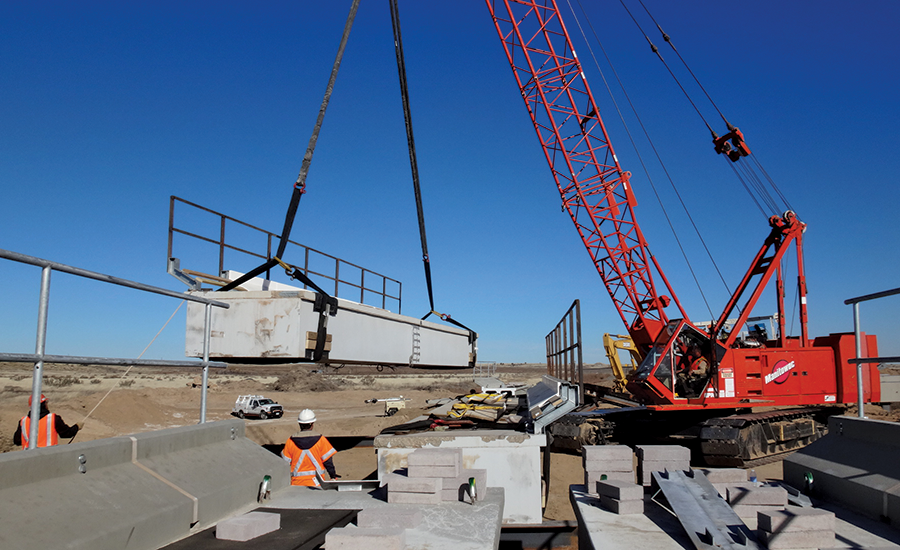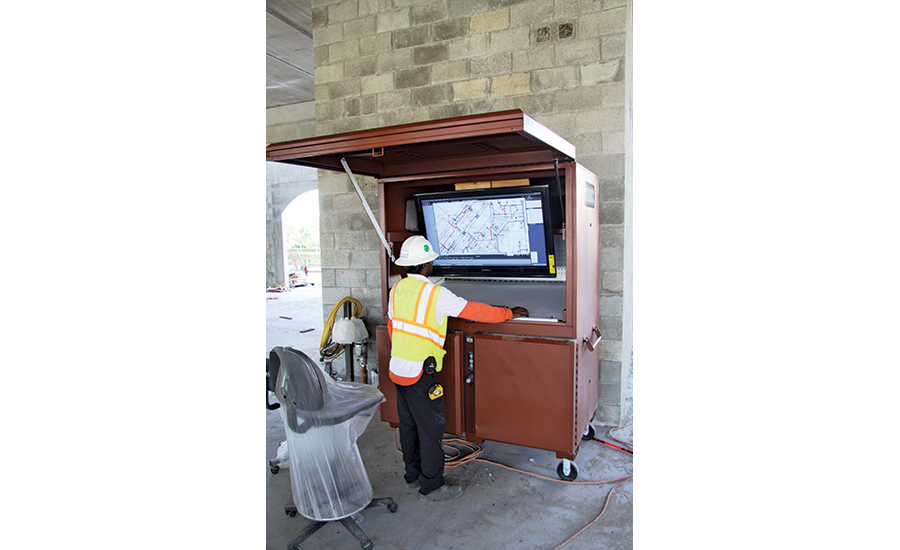What does it mean to be “creative” in engineering and construction?
For an industry founded upon solving problems, creativity is a quality that may well be as fundamental to projects as the laws of physics.
Creativity is behind every breakthrough material that changes the way structures are conceived and every process that helps streamline project schedules. It’s as far-reaching as a life-saving safety improvement and as humble as a bit of jobsite thoughtfulness that makes a client’s day.
To John Hillman, president and CEO of HCB Inc. and the 2010 recipient of ENR’s Award of Excellence, creativity is best defined by how memorable it is. “Chances are that if you take the time to reflect on something that you have never seen or experienced before, then it probably qualifies as creative,” he says.
Though some people seem to have a knack for good ideas, the process itself can be just as important to making creativity happen. Neil Deans, senior vice president of Kimley-Horn and Associates Inc., sees creativity as a natural result of a full understanding of the objective.
“Sometimes the end result exhibits a creative ‘flair’ that outwardly demonstrates the creativity employed,” he explains, “but often it is simply a building, bridge, machine or road that meets the ultimate objective—achieved through a remarkably creative design process.”
However creativity is defined and exhibited, the need for it has never been greater, because the design and construction environment has never been more complicated. Challenges such as multi-stakeholder involvement, long-term resiliency, labor shortages and environmental concerns now compound long-standing considerations of cost, schedule, quality and public safety. So too do external factors such as regulatory issues, public opinion and client and community preferences.
Successfully tackling these and other challenges would indicate a need for more “out of the box” thinking. But like a Russian nesting doll, design and construction professionals may find themselves hemmed in by other boxes. As a result, some say there may well be a tendency for project teams to simply take the path of least resistance, falling back on “safe” solutions when other approaches could offer greater value.
Chilling Effect
Some professionals point to the emergence of regulations and the threat of liability issues for having a “chilling effect” on creativity. Hillman notes that because today’s designs must be compliant with code provisions, most importantly for public safety, “one could make the case that when the design codes were simpler and covered the basic principles, that more opportunity existed for creative solutions backed up with sound engineering judgment.”
And even if a design or building professional has a creative solution to offer, there must be a client who not only wants it but also is willing to pay for it.
Indeed, although design-build and public-private partnerships are intended to foster innovation, “least cost” often trumps “best value” in the selection process, Hillman says. “More often than not, owners only facilitate a solution that is compliant and not compelling,” he says.
“Focusing on hours and margin tends to discourage creativity,” adds John Atz, Kimley-Horn’s president and CEO, who says that such mind-sets are more prevalent in the public sector. “If you include time for innovation as a line item, it will be the first thing to come off.”
Other project delivery approaches such as construction manager at-risk or lump-sum contracts may afford more freedom for creativity. “But even then, if you connect risk on result, rather than what went into justifying that approach—and the willingness to take risk—there will be fewer opportunities to be creative,” Atz says.
Though it might be tempting to blame client practices, regulations and “institutional” constraints for suppressing creativity, other factors closer to home are in play as well. Because individual talent and training underlies how individuals approach tasks, people with technical mind-sets may have more difficulty tapping the right-brain “soft skills” that spawn innovation.
“If you can apply your technical tools to meet a project’s quality and cost goals, you should be able to hit it out of the park,” says Jim Wells, executive vice president of Iowa-based contractor The Weitz Co. Wells adds that while his firm strives to do just that, “some clients subsequently told us they weren’t happy with the overall experience.”
Kaan Celebi, operations manager for international project management firm TA Group, argues that experience can sometimes be as much of a handicap as an advantage because it may cause some professionals to defer too often to the status quo.
“This can be as tangible as the projects themselves—boring designs with no aesthetic or functional concerns—to something as simple as using the same document forms and templates for the last 20 years,” Celebi says.
An engineering or contractor’s culture can likewise inhibit creativity, particularly in environments where there’s little obvious incentive to stray from the tried and true.
“The bigger the organization, the less agile it tends to be,” says Charles Thornton, the 2001 ENR Award of Excellence winner and now chairman of Charles H. Thornton & Co. LLC, a management and strategic consulting firm. “Yet the current, most efficient industry management approaches—lean and Six Sigma—all encourage agility.”
Creativity 101?
Attempting to make creativity routine across design and construction may seem a paradoxical and quixotic ambition, given the diversity of external constraints. However, refinements to corporate culture may well be a more practical starting point for sparking new ways of thinking. Monetary incentives and company awards are already found among many engineering firms and contractors, says Celebi, but “upper management’s’ genuine vision and support are the greatest enhancers of creativity.”
Atz agrees, but asks, “If someone sticks his or her neck out, do you as a corporation recognize and reward it or look only at the result?” He adds that decisions shouldn’t be made “based just on the downside of taking a risk,” even if the idea doesn’t pan out.
The simple act of communication can foster more collaboration among project teams, creating a more fertile environment for creativity. Up-front constructibility reviews and model sharing are just some of the keys that differentiate the more successful design-build projects, Thornton says.
As for those who may worry about potential liability due to defects, Thornton responds that by sharing the model, “you find the defects and eliminate the problems. If you have brains and nerve, collaboration gives you a niche.”
Wells says his company goes so far as to look for problems to solve. To fully understand a client’s specific expectations, he explains, project leaders ask a series of questions aimed at not only determining the “whats” of a project but also its “whys.”
“The more we know, the more we can plan around it,” Wells says, adding that there’s a risk of receiving difficult responses. “It’s better to know where the land mines are and what we can innovate around,” he says.
How well contractors and engineering firms cultivate creativity also will be essential in their efforts to recruit and retain the next generation of professionals, who are coming from environments where innovative thinking is the core of advancement.
“In general, I will say the way we teach engineering has evolved since, say, the 1950s,” says Stephen Muench, associate professor of construction engineering at the University of Washington. For example, Muench strives to “coach” the students’ creativity as they tackle large, complex problems with incomplete information and no one right solution.
“This is, I think, different than the old-school format of homework, homework, tests that involved a lot of memorization and not much higher-order thinking,” he says.
Interestingly, the biggest driver for creativity may well be when project teams have no choice, such as when time or resource limitations make conventional solutions unfeasible. “To me, the best projects are where time is of the essence, and you’re forced by the client to find a solution,” Thornton says.
That’s why a regular team of trusted partners is critical in such situations. “You can waste little chunks of time defending things or trying to convince other team members, which quickly adds up,” he says. “If you’re used to working with each other, you know what your partners can and can’t do. That helps move things along.”
To be sure, nobody should be faulted for electing to dip a toe into the idea pool rather than jumping in with both feet. “At the end of the day,” Hillman says, “everyone is a lot more comfortable being the 42nd man on the moon rather than the first.”
Nevertheless, Hillman adds, design and construction professionals should never pass up an opportunity to consider what may lie at the end of the less-traveled path.
“You might be rewarded, or you might fail,” he says, adding that the trade-offs of this approach were best summed up by Canadian rock musician Neil Peart, who said, “The point of the journey is not to arrive.”




